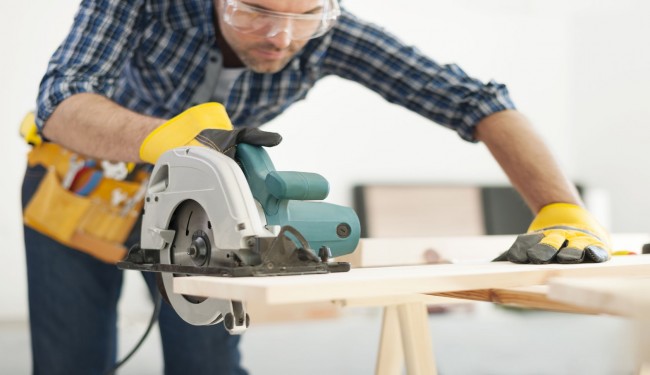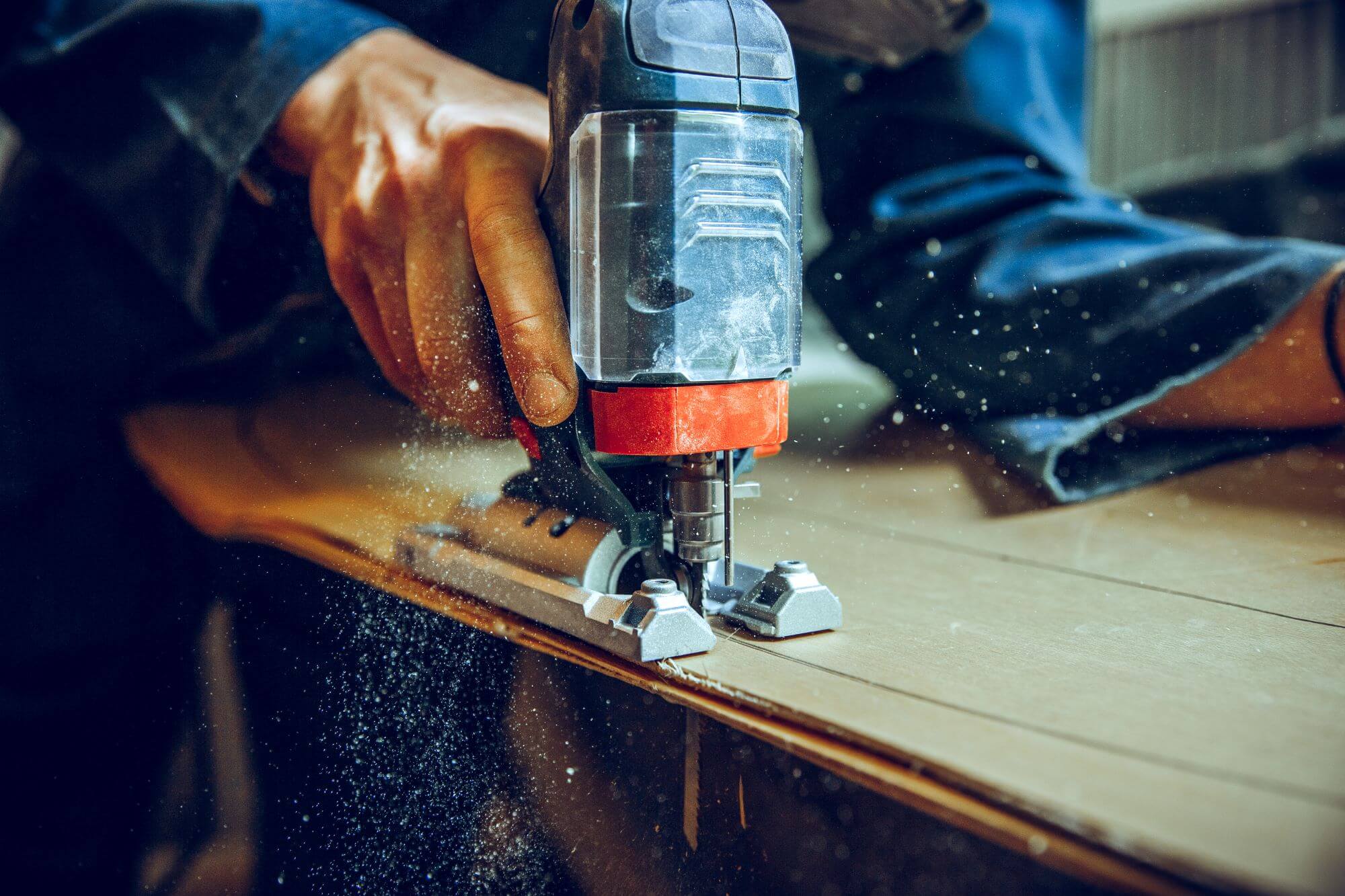Hand Tools and Relevant Safety Precautions

This article is designed to present to employees and employers a summary of the basic safety procedures and safeguards associated with hand and portable power tools.
The material in this article is based on the standards of the Occupational Safety and Health Administration; this article, however, should not be considered as a substitute for the full safety and health standards for general industry (published in Title 29 Code of Federal Regulations (CFR), Part 1910, Subpart P), or for the construction industry (published in 29 CFR Part 1926, Subpart I). These are also available on the World Wide Web at www.osha.gov.
Employers and employees in the 26 states and territories with OSHA-approved state safety and health plans should check with their state agency. Their state may be enforcing standards and other procedures that, while “at least as effective as” federal standards, are not always identical to the federal requirements. (See page 13 for more information on state plans.)
Tools are such a common part of our lives that it is difficult to remember that they may pose hazards. Tragically, a serious incident can occur before steps are taken to identify and avoid or eliminate tool-related hazards.
Employees who use hand and power tools and are exposed to the hazards of falling, flying, abrasive, and splashing objects, or to harmful dust, fumes, mists, vapors, or gases must be provided with the appropriate personal protective equipment. All electrical connections for these tools must be suitable for the type of tool and the working conditions (wet, dusty, flammable vapors). When a temporary power source is used for construction a ground-fault circuit interrupter should be used.
Employees should be trained in the proper use of all tools. Workers should be able to recognize the hazards associated with the different types of tools and the safety precautions necessary.
Five basic safety rules can help prevent hazards associated with the use of hand and power tools:
- Keep all tools in good condition with regular maintenance.
- Use the right tool for the job.
- Examine each tool for damage before use and do not use damaged tools.
- Operate tools according to the manufacturer’s instructions.
- Provide and use properly the right personal protective equipment.
Employees and employers should work together to establish safe working procedures. If a hazardous situation is encountered, it should be brought immediately to the attention of the proper individual for hazard abatement.
The following sections identify various types of hand and power tools and their potential hazards. They also identify ways to prevent worker injury through proper use of the tools and through the use of appropriate personal protective equipment.
Hazards of Hand Tools
Hand tools are tools that are powered manually. Hand tools include anything from axes to wrenches. The greatest hazards posed by hand tools result from misuse and improper maintenance.
Some examples include the following:
- If a chisel is used as a screwdriver, the tip of the chisel may break and fly off, hitting the user or other employees.
- If a wooden handle on a tool, such as a hammer or an axe, is loose, splintered, or cracked, the head of the tool may fly off and strike the user or other employees.
- If the jaws of a wrench are sprung, the wrench might slip.
- If impact tools such as chisels, wedges, or drift pins have mushroomed heads, the heads might shatter on impact, sending sharp fragments flying toward the user or other employees.
The employer is responsible for the safe condition of tools and equipment used by employees. Employers shall not issue or permit the use of unsafe hand tools. Employees should be trained in the proper use and handling of tools and equipment.
Employees, when using saw blades, knives, or other tools, should direct the tools away from aisle areas and away from other employees working in close proximity. Knives and scissors must be sharp; dull tools can cause more hazards than sharp ones. Cracked saw blades must be removed from service.
Wrenches must not be used when jaws are sprung to the point that slippage occurs. Impact tools such as drift pins, wedges, and chisels must be kept free of mushroomed heads. The wooden handles of tools must not be splintered.
Iron or steel hand tools may produce sparks that can be an ignition source around flammable substances. Where this hazard exists, spark-resistant tools made of non-ferrous materials should be used where flammable gases, highly volatile liquids, and other explosive substances are stored or used.
Appropriate personal protective equipment such as safety goggles and gloves must be worn to protect against hazards that may be encountered while using hand tools.
Workplace floors shall be kept as clean and dry as possible to prevent accidental slips with or around dangerous hand tools.
Power tools must be fitted with guards and safety switches; they are extremely hazardous when used improperly. The types of power tools are determined by their power source: electric, pneumatic, liquid fuel, hydraulic, and powder-actuated.
To prevent hazards associated with the use of power tools, workers should observe the following general precautions:
- Never carry a tool by the cord or hose.
- Never yank the cord or the hose to disconnect it from the receptacle.
- Keep cords and hoses away from heat, oil, and sharp edges.
- Disconnect tools when not using them, before servicing and cleaning them, and when changing accessories such as blades, bits, and cutters.
- Keep all people not involved with the work at a safe distance from the work area.
- Secure work with clamps or a vise, freeing both hands to operate the tool.
- Avoid accidental starting. Do not hold fingers on the switch button while carrying a plugged-in tool.
- Maintain tools with care; keep them sharp and clean for best performance.
- Follow instructions in the user’s manual for lubricating and changing accessories.
- Be sure to keep good footing and maintain a good balance when operating power tools.
- Wear proper apparel for the task. Loose clothing, ties, or jewelry can become caught in moving parts.
- Remove all damaged portable electric tools from use and tag them: “Do Not Use.”

Guards
The exposed moving parts of power tools need to be safeguarded. Belts, gears, shafts, pulleys, sprockets, spindles, drums, flywheels, chains, or other reciprocating, rotating, or moving parts of equipment must be guarded.
Machine guards, as appropriate, must be provided to protect the operator and others from the following:
- Point of operation.
- In-running nip points.
- Rotating parts.
- Flying chips and sparks.
Safety guards must never be removed when a tool is being used. Portable circular saws having a blade greater than 2 inches (5.08 centimeters) in diameter must be equipped at all times with guards. An upper guard must cover the entire blade of the saw. A retractable lower guard must cover the teeth of the saw, except where it makes contact with the work material. The lower guard must automatically return to the covering position when the tool is withdrawn from the work material.

Operating Controls and Switches
The following hand-held power tools must be equipped with a constant-pressure switch or control that shuts off the power when pressure is released: drills; tappers; fastener drivers; horizontal, vertical, and angle grinders with wheels more than 2 inches (5.08 centimeters) in diameter; disc sanders with discs greater than 2 inches (5.08 centimeters); belt sanders; reciprocating saws; saber saws, scroll saws, and jigsaws with blade shanks greater than 1/4-inch (0.63 centimeters) wide; and other similar tools. These tools also may be equipped with a “lock-on” control, if it allows the worker to also shut off the control in a single motion using the same finger or fingers. The following hand-held power tools must be equipped with either a positive “on-off” control switch, a constant pressure switch, or a “lock-on” control: disc sanders with discs 2 inches (5.08 centimeters) or less in diameter; grinders with wheels 2 inches (5.08 centimeters) or less in diameter; platen sanders, routers, planers, laminate trimmers, nibblers, shears, and scroll saws; and jigsaws, saber and scroll saws with blade shanks a nominal 1/4-inch (6.35 millimeters) or less in diameter. It is recommended that the constant-pressure control switch be regarded as the preferred device.
Other hand-held power tools such as circular saws having a blade diameter greater than 2 inches (5.08 centimeters), chain saws, and percussion tools with no means of holding accessories securely must be equipped with a constant-pressure switch.
Safety and Health Program Management Guidelines
Working in a safe and healthful environment can stimulate innovation and creativity and result in increased performance and higher productivity.
To assist employers and employees in developing effective safety and health management systems, OSHA published recommended Safety and Health Program Management Guidelines (Federal Register 54(16): 3904-3916, January 26, 1989). These voluntary guidelines can be applied to all places of employment covered by OSHA.
The guidelines identify four general elements that are critical to the development of a successful safety and health management system. These are the following:
- Management leadership and employee involvement,
- Worksite analysis,
- Hazard prevention and control, and
- Safety and health training. The guidelines recommend specific actions, under each of these general elements, to achieve an effective safety and health management system. The Federal Register notice is available online at www.osha.gov.

